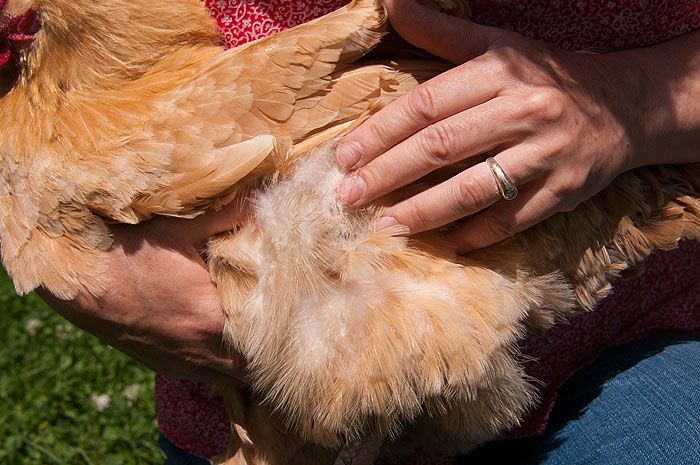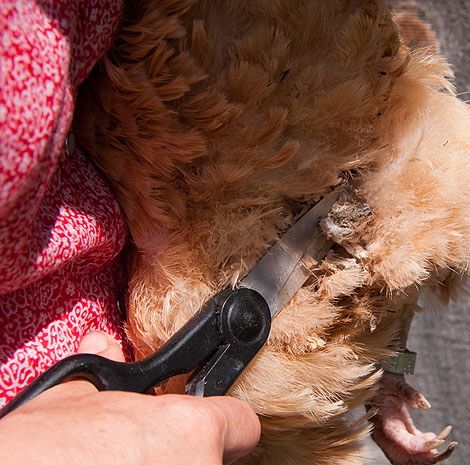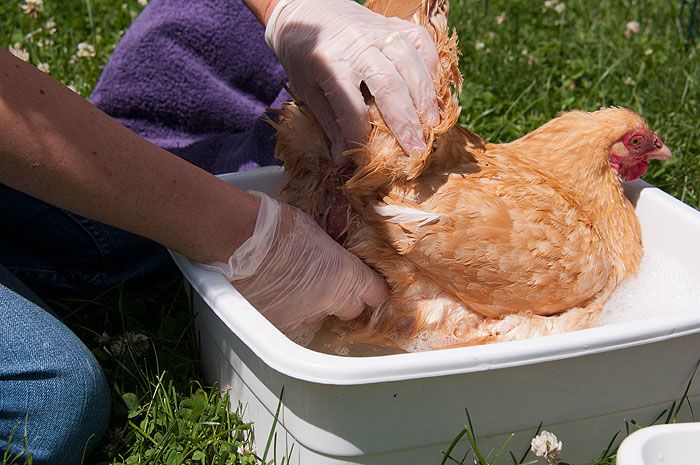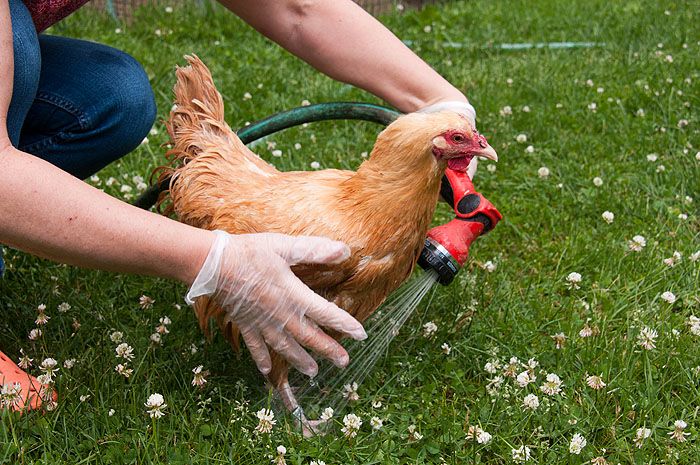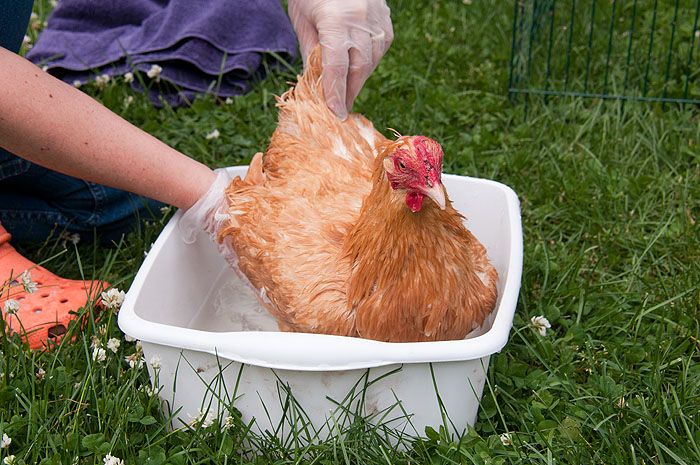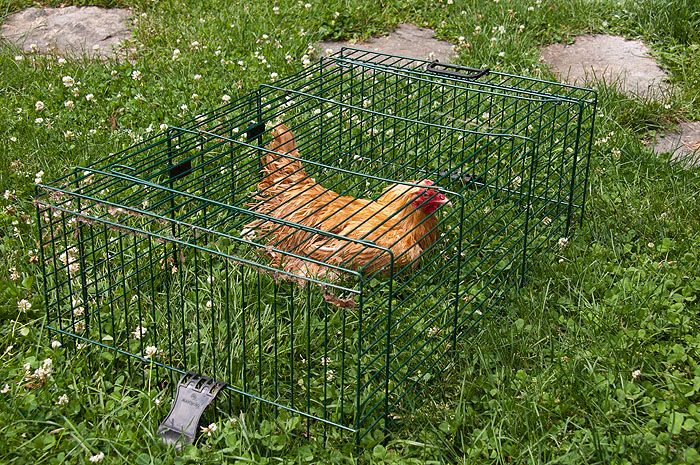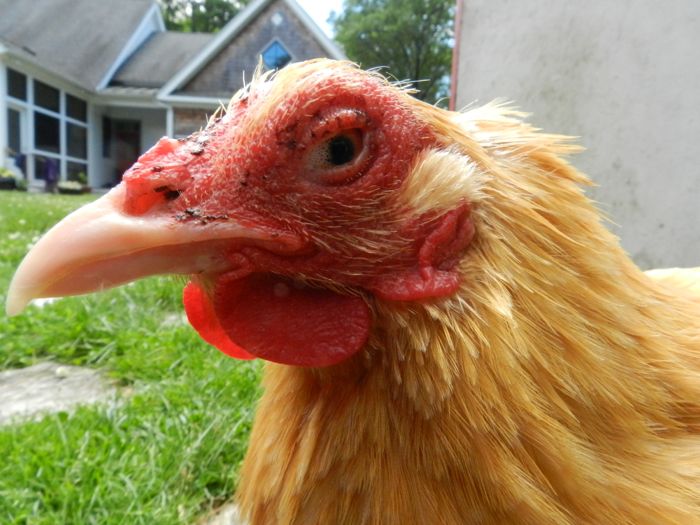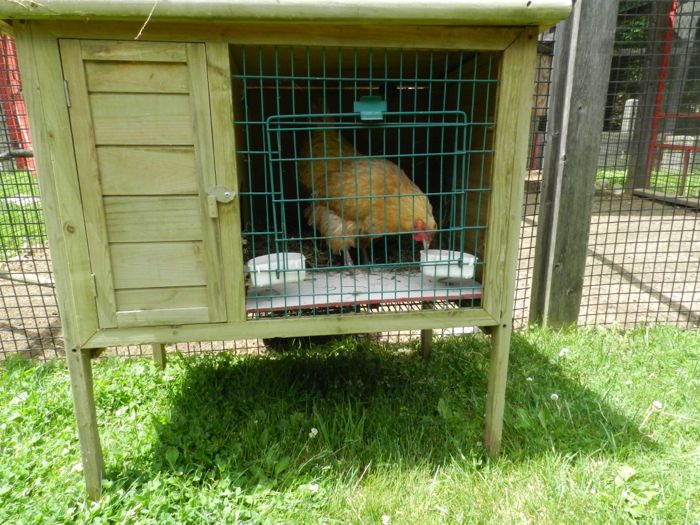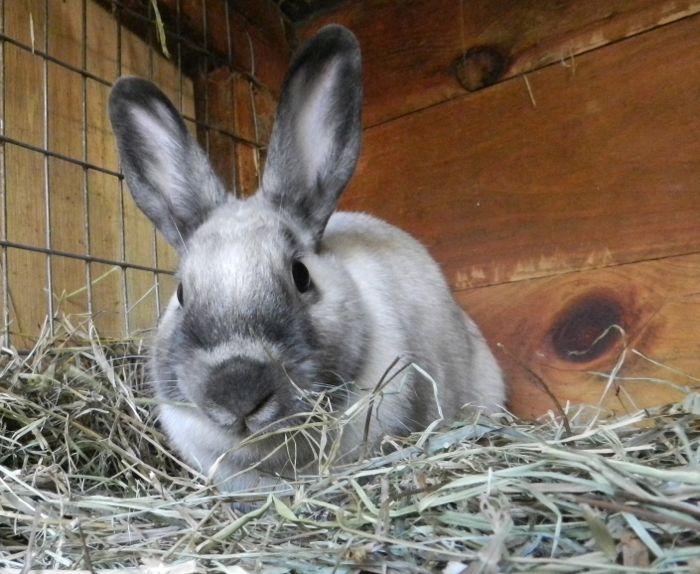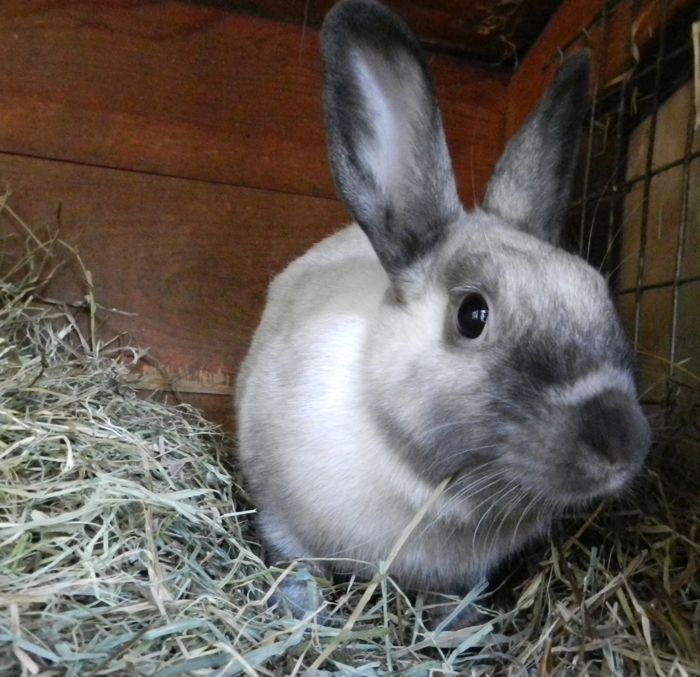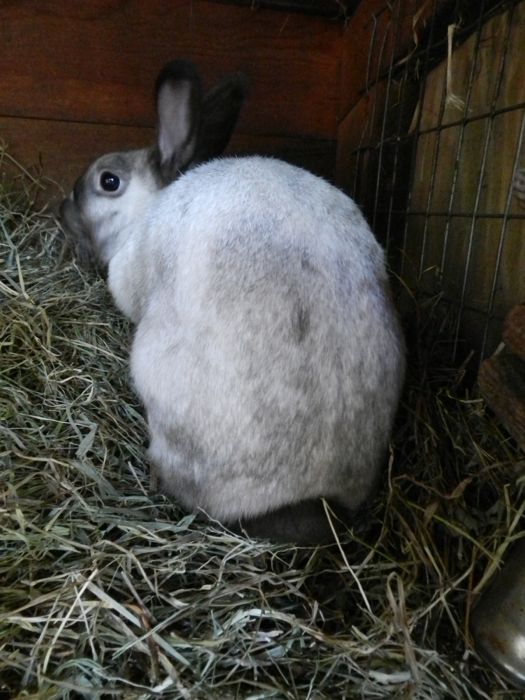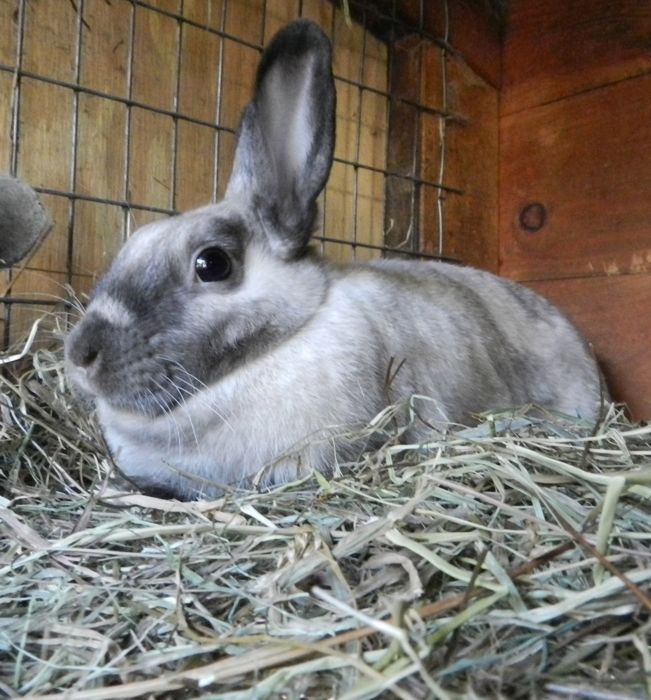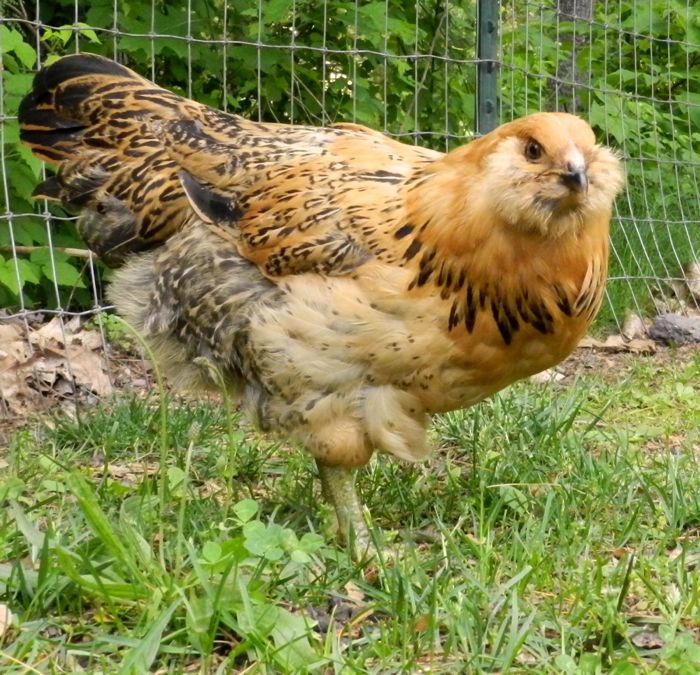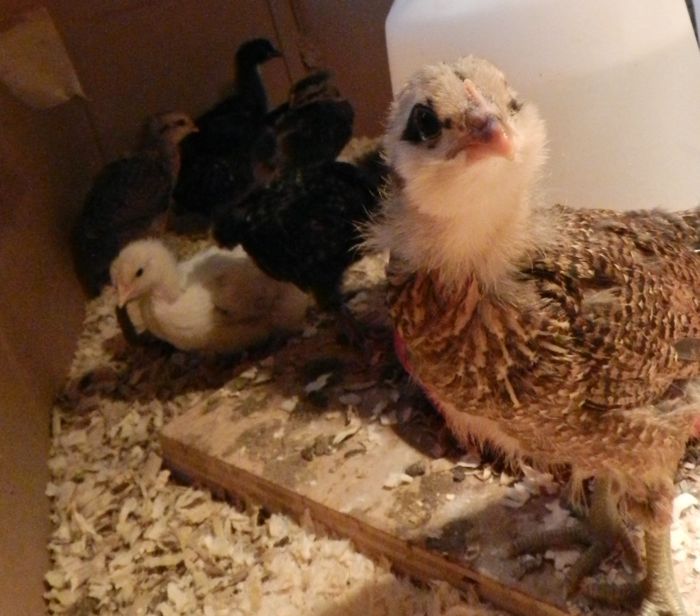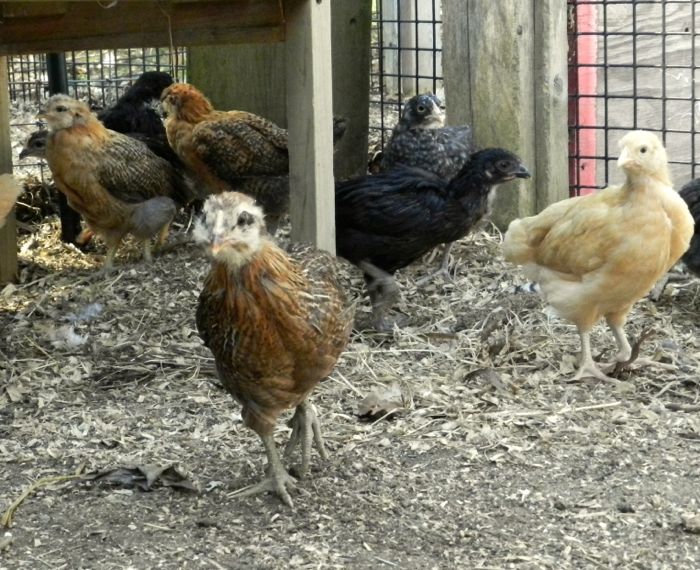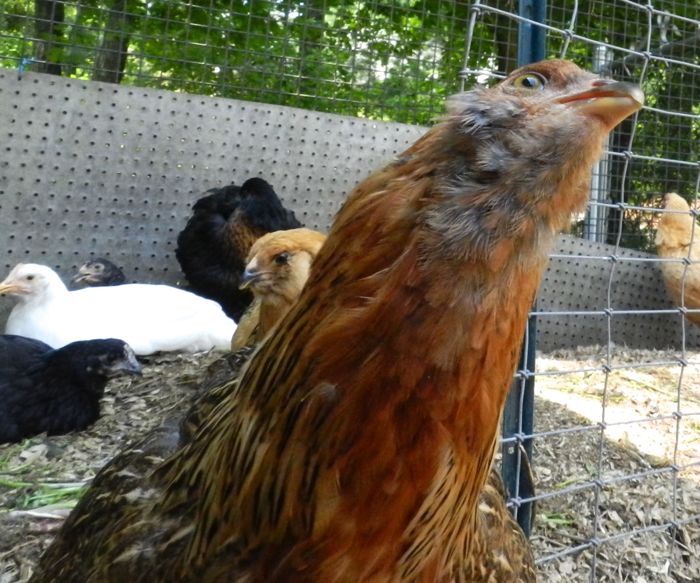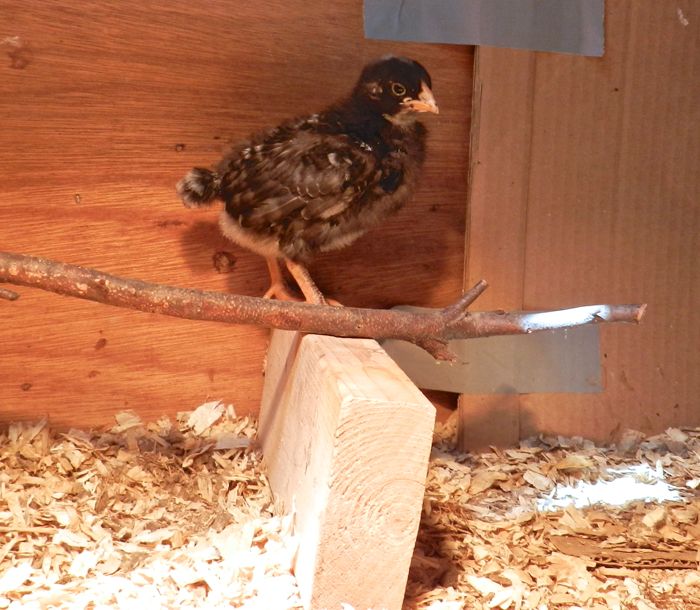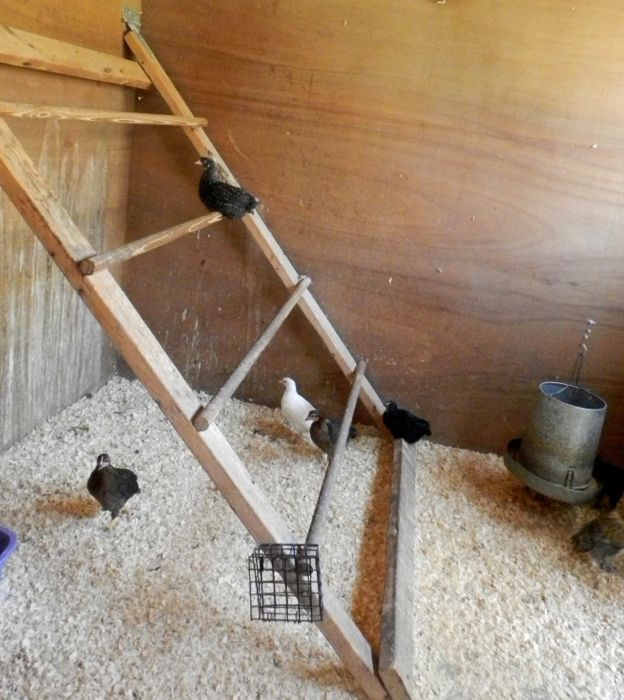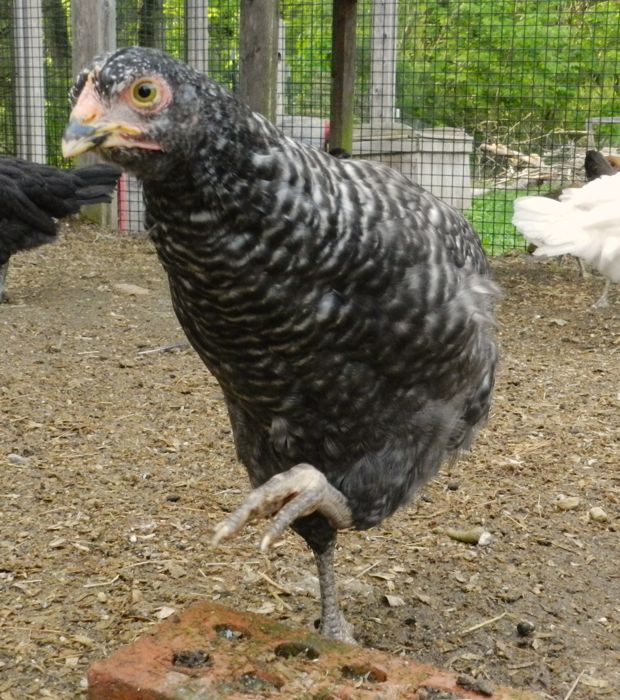Buffy was looking even more poorly than usual. She could stand upright, but had no strength in her legs: I went to help her move from one spot to another and she tipped over. This weakness prevented her from keeping herself tidy, as she doesn’t have the balance to groom herself. I picked her up and found two balls of manure stuck under her wings.
Buff Orpingtons, with their layers of feathers, hard on top and fluffy under, can hide such yuckiness. Along with that mess, Buffy has always had vent gleet, but lately I’ve also seen vile yellow/green/white liquid poo streaming out of her (a very bad sign.) It was time for a bath, and as long as she was getting cleaned up, I decided to make it a Spa Day.
First, I used scissors to cut off the manure, both what was stuck on her thighs and by her vent. I checked for lice and was surprised that there wasn’t an infestation, which shows that Buffy has been well enough to dust bathe.
Next, I set her in a tub of warm sudsy water and gently washed her bottom. I left her back alone, as that was clean enough. I cleaned her up as best I could.
Then I rinsed off the suds (the water in the hose was comfortably warm from the sun.)
Next came a soak in a warm epsom salt bath. Epsom salts have many curative powers, and soothe irritated skin.
Of course, a girl needs a pedicure at the spa. Because old hens don’t scratch vigorously in the dirt their nails don’t wear down. A trim once in awhile allows them to walk more easily. I use a dog nail clipper.
Then I patted her dry in a towel.
Blew her somewhat dry,
And put her on the lawn to let the sun finish the job.
During this cleanup, I was very concerned to see white bubbles in Buffy’s left eye.
Usually such foam in an eye is a sign of respiratory illness and can have dire consequences for the entire flock. But this is Buffy, who is on her tenth life. She was showing no signs of breathing difficulties, and the bubbles came and went. When in doubt, always isolate and observe. I put her in the sick coop,
where Buffy happily ate up an entire bowl of laying hen feed. Truly sick chickens don’t eat. And then she pooped big normal poops. And then she had a nice rest. By evening, the eyes looked clear and Buffy was (yet again) rejuvenated and joined her flock.
Buffy is one tenacious hen.
